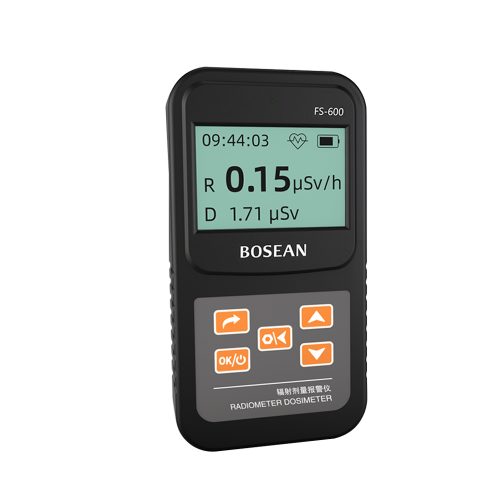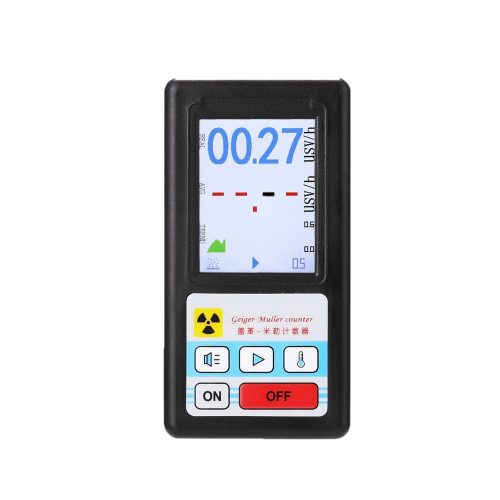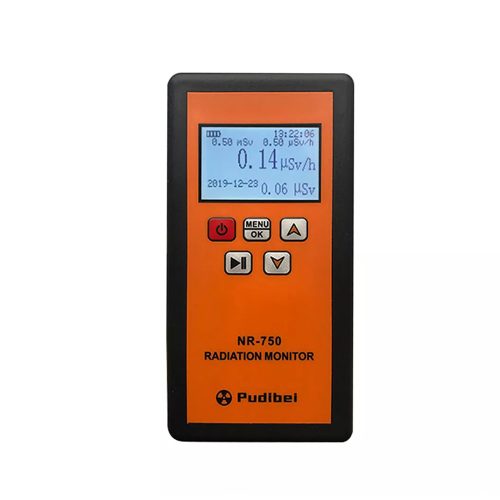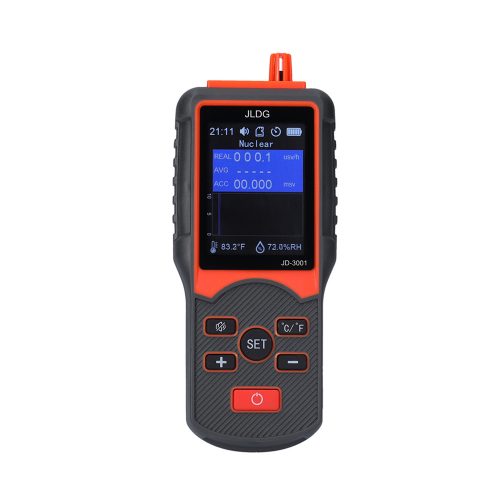BEST GEIGER COUNTER COLLECTION FOR YOU
- Geiger Counter Definition
- Geiger Counter Invention
- Best Brands
Oakton
Ludlum
Terra-P
BW Technologies
Victoreen
Gamma Scout
SOEKS
Mazur Instruments
MightyOhm
AMTAST
Enshey
Greentest
Radalert
imagesco
Jeanoko
The radiation enters the window at the end of the tube.
When the radiation collides with the gas molecules inside the tube, it causes ionization. Some gas molecules become positive ions and electrons.
Positive ions are attracted to the outside of the tube.
The electrons are attracted to a metal wire inside the tube.
The metal wire runs at a high positive voltage.
As the electrons go to the metal wire, some electrons collide with other gas molecules such that they split into ions and more electrons.
Thus, even a single radiating particle can produce electrons in rapid succession, which is called a Geiger discharge.
Many electrons travel down the wire, creating a burst of current.
The electrons deflect the meter needle.
If you connect a megaphone, you can hear a loud click each time a particle is detected. The number of clicks is a rough indication of how much radiation is present.
Before the counter detects radiation, it needs to be restored to its original state by quenching to counteract the effects of the Geiger discharge.
- Ability to measure
If you are looking for protection, it should be able to detect beta, gamma, and X-rays.
- Sensitivity
A Geiger counter is more sensitive if it can count more particles. Under the same conditions, a good Geiger counter might be able to count 1000 particles, while the low-end one can only count 500 particles.
There are 4 common tube models, LND-7317, LND-712, SBT-11 and SBM20-1.
The LND-7317 has the highest sensitivity but is easily damaged.
LND-712 measures α, β, γ, and X-rays but is less sensitive than LND-7317.
The SBM20 detects alpha, beta, gamma, and x-rays. The SBM20 is less sensitive than the LND-712 and is more easily damaged.
- Purchase Purpose
If you want to detect and measure rocks, antique watches, antique ceramics, etc., you need an accurate Geiger counter with four types of radiation.
- Battery
You can use AC power when you are at home, office, school, or lab. At this point, an additional AC adapter and an external power port are indispensable.
- Data Transfer
A Geiger counter will have a "tick" or click when there is significant radiation. It produces a sound when a radioactive particle passes through the G-M tube. In a natural environment, you can get 15-25 CPM.
The Geiger counter has many units such as CPM, micro roentgen/hour, micro Sievert/hour, etc. A button allows you to switch Geiger counter units and even switch the radiation rate.
The sensitivity and minimum count depend on many factors, the size of the tube being one of them. Usually, larger tubes will show more readings. Larger tubes are more sensitive and can even show very low radiation.
1. You set the Geiger counter to a timer (at least 5 minutes).
2. You can change the time +1/-1 minute with the button. The middle button starts the count.
3. Press the middle button to start counting.
4. Place the counter where the radiation is measured and let it run for the specified time, and it will give you the total radiation.
The counter may bounce up and down as you measure the radioactivity in your surroundings, but it doesn't matter. It is the total amount that is important.
Divide the total by the time, and you will get the average radioactivity. Some counters show an average value.
If you find 7-30 CPM in your surroundings, that's normal. Anything below 150 CPM is safe. If it exceeds that, then the substance is dangerously radioactive.
- Emf Detector vs Geiger Counter
However, personal radiation detectors can detect and locate radiation sources, such as nuclear weapons, INDs, or RDDs. They perform radiation detection around the wearer and quickly find the source of radiation.
We first need to know what radioactive ionizing radiation is, why it is worth detecting, and what makes the click sound.
Since hydrogen has no neutral neutrons, it is very stable and is used today in various applications. On the other hand, Uranium has 92 electrons, 92 protons, and 146 neutrons. Therefore it is more unstable and breaks down into smaller, more stable elements.
When Uranium breaks down, energy and small particles are released. These byproducts knock electrons off other nearby atoms, which is called ionizing radiation.
There are three main types of radiation: alpha, beta, and gamma.
Alpha particles are very slow and cannot travel more than a few centimeters.
Beta particles can travel much farther.
Gamma radiation can travel great distances and penetrate solid concrete. The Geiger counter dangerous levels are the highest because they can penetrate the body and damage the atoms inside cells.
The detector is a hollow metal tube containing an inert gas with a conductive wire in its center. A battery gives this wire a positive charge.
When a radioactive atom breaks down, the particles and energy released knock off the electrons. These electrons have only a minimal charge, but together they cause a short electrical pulse. Conductive wires are positively charged and will attract negatively charged electrons.
A pulse is created each time a radioactive atom breaks down, hence the "click" sound. Each click represents the decay of an atom, so more clicks mean more radiation. A normal click is 50 clicks per minute.
- Dosimeter vs Geiger Counter
Dosimeters can be badges, pen/tube types, stickers, or digital readouts. They measure the cumulative total amount of radiation.






